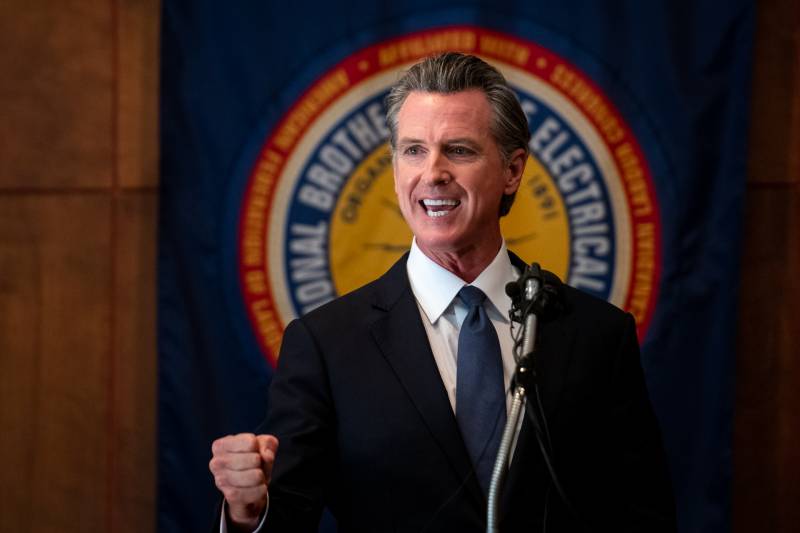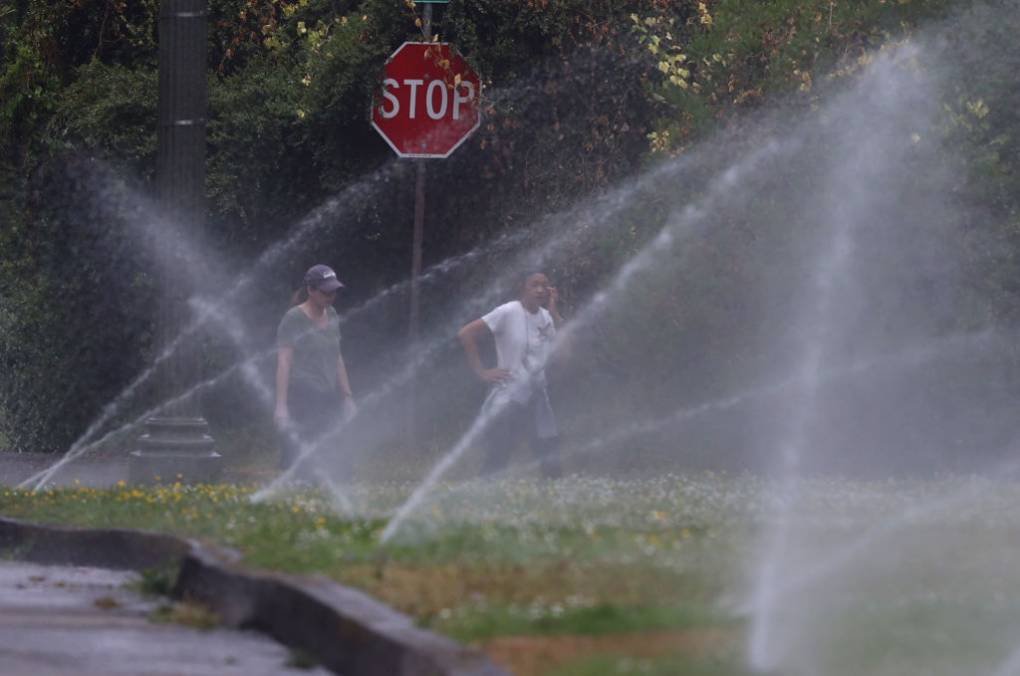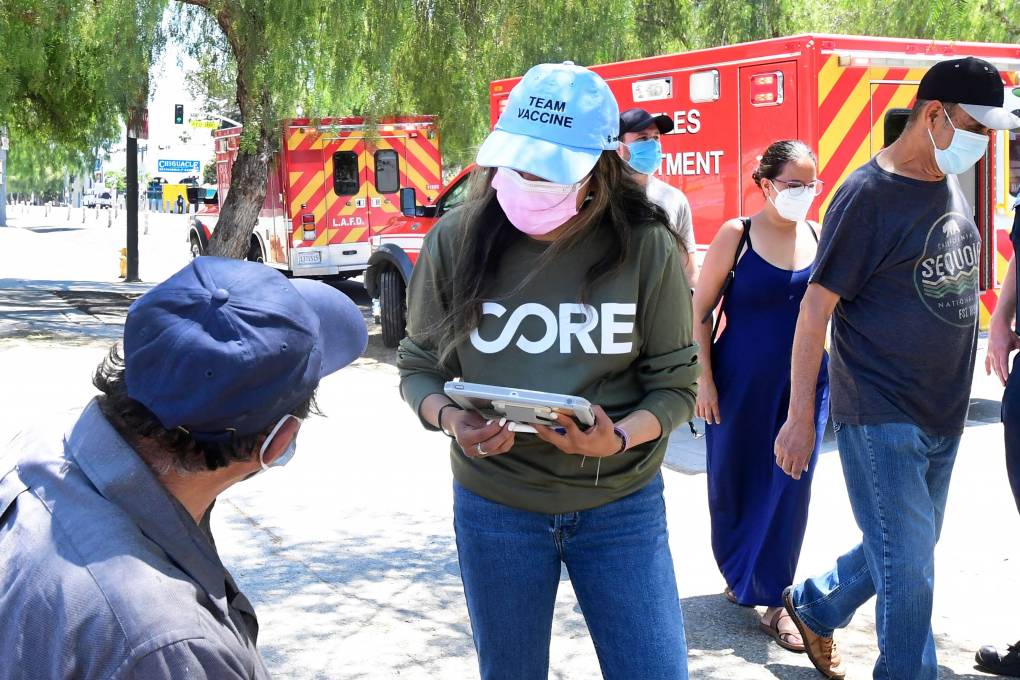The governor is also including $1.2 billion in new spending on initiatives like forest thinning, prescribed burns, grazing, reforestation, fuel breaks and new technology to detect wildfires early. And he wants to direct nearly $650 million in new funds to support firefighting efforts — including $400 million for CalFire firefighters directly.
“They are overwhelmed, they are stressed,” Newsom said of the CalFire workforce. “We have gotten staffing up [in recent years] but the workload is still profound.”
Newsom wants to reduce the state’s reliance on fossil fuels in part by investing a total of $10 billion to encourage the switch to electric vehicles, including nearly $4 billion for trucks, buses and heavy-duty vehicles. And he’s proposing over $1 billion over the next three years in new tax credits for businesses that create “cutting-edge climate solutions” and “develop green energy technologies and agree to share profits.”
Targeting inequality
The governor also is prioritizing the state’s high cost of living, saying he wants to help blunt the rising costs of health care, housing and child care — and help small businesses stay open.
Among his initiatives:
- Expanding Medi-Cal health coverage to undocumented immigrants who are between age 26 and 50. In recent years, the state has slowly increased access to the health care insurance program for Californians with lower incomes — first by expanding it to young people up to age 26 in 2019, and then last year by including an estimated 235,000 undocumented people over the age of 50. Under this year’s proposal — which is likely to be embraced by the Democrat-led Legislature, another 764,000 people would be covered by January of 2024.
- Investing in child care and education programs by adding thousands of new child care slots for lower-income families and increasing access to before-, after- and summer-school programs. He’s also proposing $4 billion in spending over the next several years to create universal preschool in California.
- Earmarking $2 billion for grants and tax credits aimed at increasing housing production in California.
- Providing hundreds of millions of dollars in grants and tax breaks to small businesses as well as waiving fees. Newsom, a business owner himself, noted the challenges small businesses have faced during this pandemic.
- $182 million to fight the opioid epidemic, particularly the fentanyl crisis, including for overdose prevention and medication-assisted treatment.
And, the governor said the state will be experimenting with a way to bring down the cost of prescription drugs by entering into agreements to produce its own insulin.
“Insulin epitomizes the failures in the pharmaceutical industry,” he said, adding that more details will be released in the coming months but that he hopes the pilot program could be a model for other pharmaceutical products.
Reducing homelessness
In addition to $12 billion authorized last year, Newsom is proposing another $2 billion in spending this year aimed at getting people off the street and into shelters that have behavioral health support. He noted that the state has housed more than 50,000 people since the pandemic began, through its Project Roomkey program, but said more needs to be done.
Most strikingly, the governor indicated he intends to double down on one of the state’s most controversial strategies for getting people into housing: conservatorship laws, which allow counties to force residents deemed mentally incompetent by a court into treatment.




